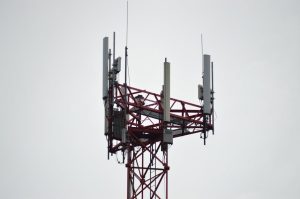
GEO Satellites: Revolutionizing Global Communication and Navigation
GEO satellites, or Geostationary Earth Orbit satellites, are a type of satellite that orbits the Earth at an altitude of approximately 36,000 kilometers, remaining stationary above a fixed point on the equator. This unique orbit allows GEO satellites to provide continuous coverage of a specific region, making them ideal for a variety of applications, including communication, navigation, and weather forecasting.
GEO satellites have been a crucial part of modern communication systems for decades, providing global coverage and enabling the transmission of data, voice, and video signals across the globe. They are used by television broadcasters, telecommunications companies, and governments to provide a range of services, including satellite television, broadband internet, and mobile phone networks.
How GEO Satellites Work
GEO satellites work by transmitting and receiving signals to and from Earth-based stations. They are equipped with transponders, which are devices that receive signals from Earth, amplify them, and then re-transmit them back to Earth. This process allows data to be transmitted from one location to another, enabling global communication and connectivity.
GEO satellites are typically launched into orbit using powerful rockets, and once they reach their desired altitude, they are stabilized and oriented to face the Earth. They are powered by solar panels, which provide the energy needed to operate the satellite’s systems, including the transponders, antennas, and propulsion systems.
Applications of GEO Satellites
GEO satellites have a wide range of applications, including:
Communication: GEO satellites are used to provide global communication services, including satellite television, broadband internet, and mobile phone networks. They enable the transmission of data, voice, and video signals across the globe, connecting people and communities worldwide.
Navigation: GEO satellites are used in navigation systems, such as GPS, to provide location information and timing signals. These signals are used by a wide range of applications, including aviation, maritime, and land transportation.
Weather Forecasting: GEO satellites are used to monitor the weather and provide forecasts. They are equipped with sensors that can detect changes in the atmosphere, oceans, and land surfaces, enabling meteorologists to predict weather patterns and storms.
Benefits of GEO Satellites
GEO satellites have numerous benefits, including:
Global Coverage: GEO satellites provide global coverage, enabling communication and navigation services to be delivered to remote and underserved areas.
High-Speed Data Transfer: GEO satellites can transfer data at high speeds, enabling the transmission of large amounts of data, including video and audio files.
Reliability: GEO satellites are highly reliable, with some satellites operating for 20 years or more. They are designed to withstand the harsh conditions of space and provide continuous service.
Challenges and Limitations of GEO Satellites
Despite the many benefits of GEO satellites, there are also challenges and limitations to their use. These include:
Signal Delay: GEO satellites are located at a high altitude, which means that there is a delay in the signal transmission. This delay can be significant, and it can affect the quality of the service.
Interference: GEO satellites can be affected by interference from other satellites and terrestrial systems. This interference can cause errors and disruptions to the service.
Orbit Congestion: The geostationary orbit is becoming increasingly congested, with many satellites operating in the same region. This congestion can lead to interference and collisions between satellites.
Future of GEO Satellites
The future of GEO satellites is exciting and rapidly evolving. New technologies, such as high-throughput satellites and satellite constellations, are being developed to provide faster and more reliable services.
High-Throughput Satellites: High-throughput satellites are designed to provide faster data transfer rates and higher capacity. They are equipped with advanced technologies, such as spot beams and frequency reuse, which enable them to provide more efficient and effective services.
Satellite Constellations: Satellite constellations are groups of satellites that operate together to provide global coverage. They are designed to provide faster and more reliable services, and they are being used for a wide range of applications, including communication, navigation, and Earth observation.
